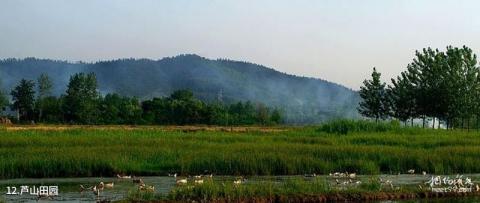
Introduction to Lushan Pastoral: There are two Lushan Mountains in the east and west in the southeast of Longzi Lake, which are connected in a chain and wind for more than 20 miles. Between the two mountains, there are gentle hills, mountain streams, winding lakes, fields, and villages. Among the green trees, the scenery is leisurely.
Lushan was originally called "Lu Mountain". It was named after Lu Su during the Three Kingdoms period once stationed troops and grain in Dongshan. There were four large pits left in the mountain, which were called "Jintun" and "Yintun" by the locals. ", "Mihutun", "Mianhutun", Meicun not far away from Shannan still retains an ancient well used by Lu Su, and it is still used by the current villagers for two thousand years.
Lushan Temple was built in the south of the mountain in the Ming Dynasty. It has two courtyards, a main hall and a gallery in the style of a residential building. On both sides of the Buddha statue, there are eighteen arhats, which are majestic. The nearby temples and nunneries such as Hongta Temple and Ding'an are under its control.
